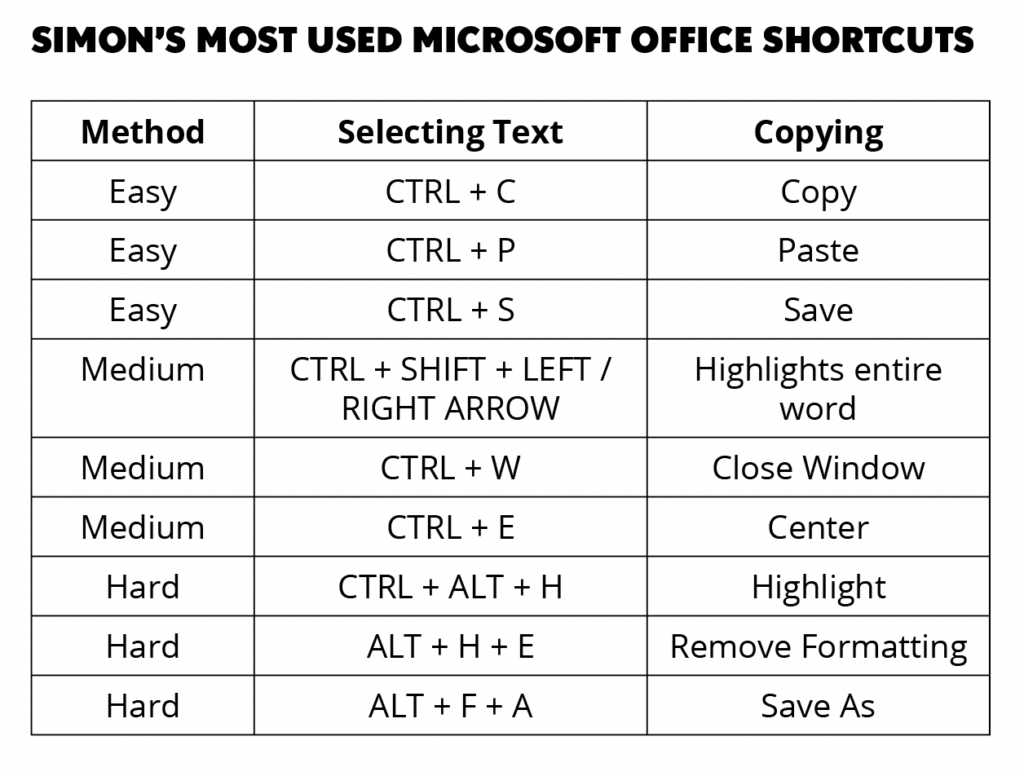

Simon Liang, Education Program Specialist, IBAO
It might seem like a stupid question, but why do you do the things you do, the way you do? Do you pour the milk first or the cereal? Do you tie your shoelaces with bunny ears or the Ian knot? Does any of this matter? Maybe, maybe knot! What I really want to ask is, have you actually questioned any of this? I was always interested in how people do certain tasks, and why they do it that way. For example, when I asked my colleagues how they keep track of reminders for themselves, they said:
- Write physically on a sticky note and stick them on the monitor
- Write physically in a notebook
- Type a reminder in my outlook calendar
- Use a software solution like Trello
This is interesting to me for two reasons. First, I get to steal their ideas and figure out better ways to work more efficiently. Second, I get a perspective of their thought process and see if mine has any logical gaps.
“There’s no one way of doing things, but there may exist a best way for your use case. Your specific technique can evolve when you are open to change and staying curious.”
When you start a new job, it’s common to have to adapt to a new system. This is often the critical time to ask those why questions since your mind is in a malleable state to accept new information. And, when you do ask those questions, often the response will be: that’s how I was taught, that’s how we’ve always done it, or I’m not sure. This is especially true the more basic an action is because people don’t often challenge the base they’ve built their understandings on. For example, why do you run the way you do? You can’t explain it, you just do and no one has ever questioned you on it.
If you are perceptive of things happening around you and ask the why questions, you can refine what you already do to make your life easier. Choose battles that would either: a) greatly impact one aspect of your work or b) have a small impact across all aspects of your work. And the only way to know what category your battle belongs under is by carefully considering what process is slow, annoying, and reoccurring.
To illustrate an example, what would you do if you had to copy 5000 words of text over to a different file or window? It might seem like a no-brainer that everyone would copy and paste—only a masochist would manually retype it—but how would you go about it? Below is a table outlining two ways of achieving the different steps of the same goal.

You save two seconds of your life—big deal, right? Spending time re-adopting a new technique for an existing method takes time and practice. Maybe that doesn’t seem worth it. But if your job was to copy and paste words for eight hours per day, it would be. There’s no one way of doing things, but there may exist a best way for your use case. Your specific technique can evolve when you are open to change and staying curious.
Although learning a new way to copy and paste text wouldn’t greatly impact one aspect of your work, it could definitely save you a lot of time in the long run as it has a small impact across all aspects of your work.
Often even when a better solution for an existing problem already exists, we find ourselves resistant to change—we are wired to avoid pain. But if you push forward and work to find efficiencies wherever you can find them, they’ll start to add up.


